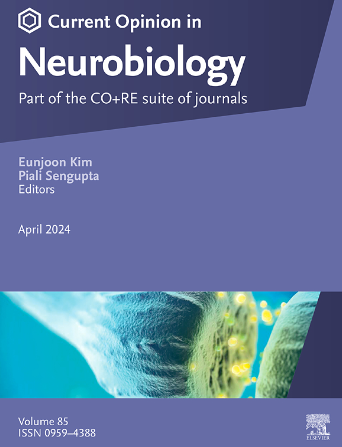How radial glia progenitor lineages generate cell-type diversity in the developing cerebral cortex
IF 5.2
2区 医学
Q1 NEUROSCIENCES
引用次数: 0
Abstract
The cerebral cortex is arguably the most complex organ in humans. The cortical architecture is characterized by a remarkable diversity of neuronal and glial cell types that make up its neuronal circuits. Following a precise temporally ordered program, radial glia progenitor (RGP) cells generate all cortical excitatory projection neurons and glial cell-types. Cortical excitatory projection neurons are produced either directly or via intermediate progenitors, through indirect neurogenesis. How the extensive cortical cell-type diversity is generated during cortex development remains, however, a fundamental open question. How do RGPs quantitatively and qualitatively generate all the neocortical neurons? How does direct and indirect neurogenesis contribute to the establishment of neuronal and lineage heterogeneity? Whether RGPs represent a homogeneous and/or multipotent progenitor population, or if RGPs consist of heterogeneous groups is currently also not known. In this review, we will summarize the latest findings that contributed to a deeper insight into the above key questions.
放射状胶质祖细胞谱系如何在发育中的大脑皮层中产生细胞类型多样性
大脑皮层可以说是人类最复杂的器官。皮层结构的特点是组成其神经元回路的神经元和胶质细胞类型的显著多样性。放射状胶质祖细胞(RGP)遵循一个精确的时间顺序程序,生成所有皮层兴奋性投射神经元和胶质细胞类型。皮层兴奋性投射神经元可以直接产生,也可以通过中间祖细胞间接神经发生产生。然而,在皮层发育过程中,广泛的皮层细胞类型多样性是如何产生的,仍然是一个基本的开放性问题。rgp是如何定量和定性地产生所有新皮质神经元的?直接和间接神经发生如何促进神经元和谱系异质性的建立?目前还不清楚rgp是否代表同质和/或多能祖群体,或者rgp是否由异质群体组成。在这篇综述中,我们将总结有助于更深入地了解上述关键问题的最新发现。
本文章由计算机程序翻译,如有差异,请以英文原文为准。
求助全文
约1分钟内获得全文
求助全文
来源期刊

Current Opinion in Neurobiology
医学-神经科学
CiteScore
11.10
自引率
1.80%
发文量
130
审稿时长
4-8 weeks
期刊介绍:
Current Opinion in Neurobiology publishes short annotated reviews by leading experts on recent developments in the field of neurobiology. These experts write short reviews describing recent discoveries in this field (in the past 2-5 years), as well as highlighting select individual papers of particular significance.
The journal is thus an important resource allowing researchers and educators to quickly gain an overview and rich understanding of complex and current issues in the field of Neurobiology. The journal takes a unique and valuable approach in focusing each special issue around a topic of scientific and/or societal interest, and then bringing together leading international experts studying that topic, embracing diverse methodologies and perspectives.
Journal Content: The journal consists of 6 issues per year, covering 8 recurring topics every other year in the following categories:
-Neurobiology of Disease-
Neurobiology of Behavior-
Cellular Neuroscience-
Systems Neuroscience-
Developmental Neuroscience-
Neurobiology of Learning and Plasticity-
Molecular Neuroscience-
Computational Neuroscience
 求助内容:
求助内容: 应助结果提醒方式:
应助结果提醒方式:


